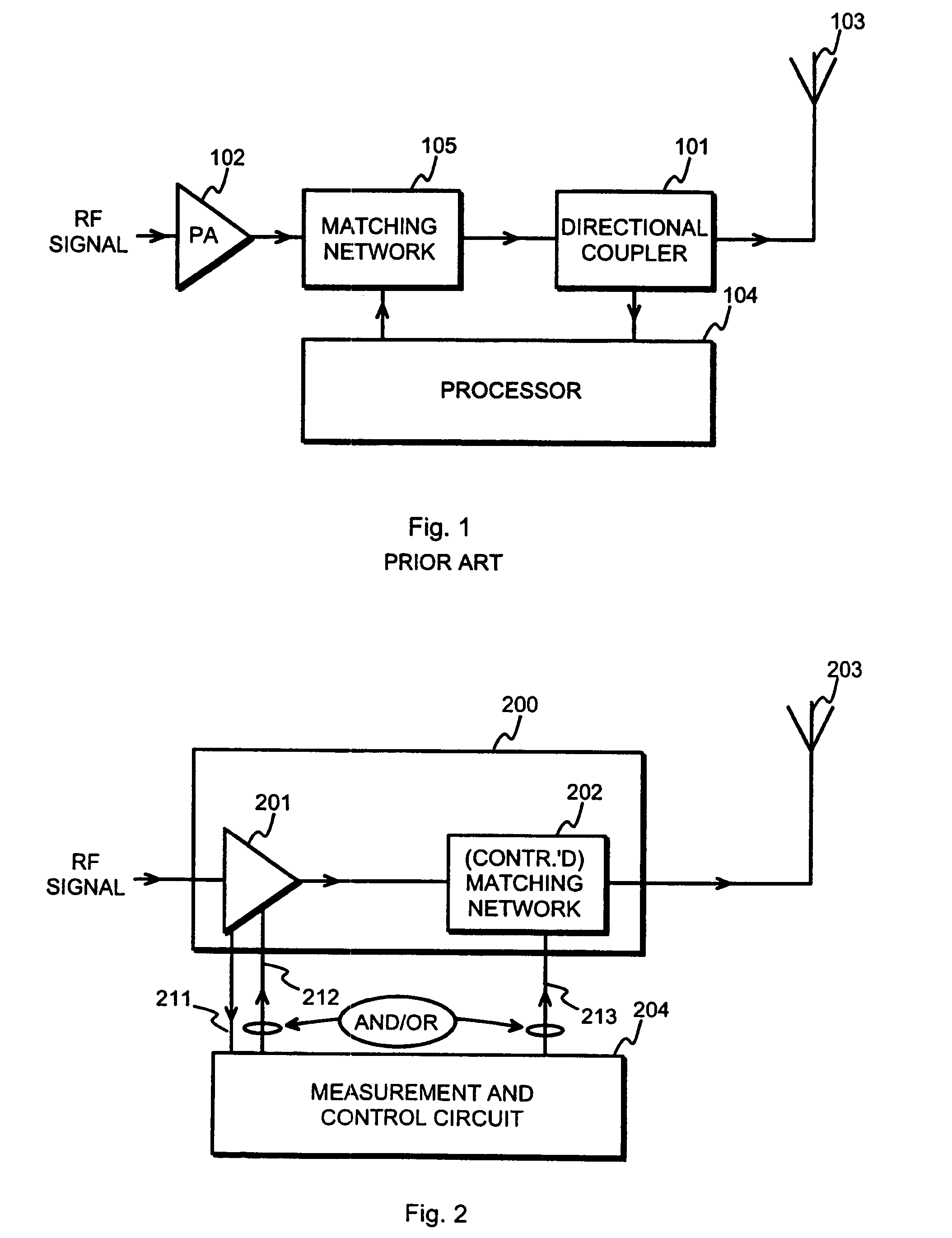Method and arrangement for detecting load mismatch, and a radio device utilizing the same
a radio device and load mismatch technology, applied in the field of radio frequency power amplifiers and their, can solve the problems of antenna mismatch, impedance mismatch between the antenna and the power amplifier, and the practicable antenna is not operating under steady-state conditions, so as to reduce losses and accurately and reliably detect the mismatch of the antenna
- Summary
- Abstract
- Description
- Claims
- Application Information
AI Technical Summary
Benefits of technology
Problems solved by technology
Method used
Image
Examples
Embodiment Construction
[0046]The exemplary embodiments of the invention presented in this patent application are not to be interpreted to pose limitations to the applicability of the appended claims. The verb “to comprise” is used in this patent application as an open limitation that does not exclude the existence of also unrecited features. The features recited in depending claims are mutually freely combinable unless otherwise explicitly stated.
[0047]Regarding an issue of terminology, in the technological field of radio transmitters and especially transmitters in portable radio devices it has become customary to use the terms “power amplifier” and “PA” to designate an entity that comprises both an amplifying part and an impedance matching network that matches the output impedance of the amplifying component to a predetermined value. This is a further development from the practice of the early 1990's, according to which a single, individually packaged large transistor could be a “PA”—in present-day termi...
PUM
 Login to View More
Login to View More Abstract
Description
Claims
Application Information
 Login to View More
Login to View More - R&D
- Intellectual Property
- Life Sciences
- Materials
- Tech Scout
- Unparalleled Data Quality
- Higher Quality Content
- 60% Fewer Hallucinations
Browse by: Latest US Patents, China's latest patents, Technical Efficacy Thesaurus, Application Domain, Technology Topic, Popular Technical Reports.
© 2025 PatSnap. All rights reserved.Legal|Privacy policy|Modern Slavery Act Transparency Statement|Sitemap|About US| Contact US: help@patsnap.com



